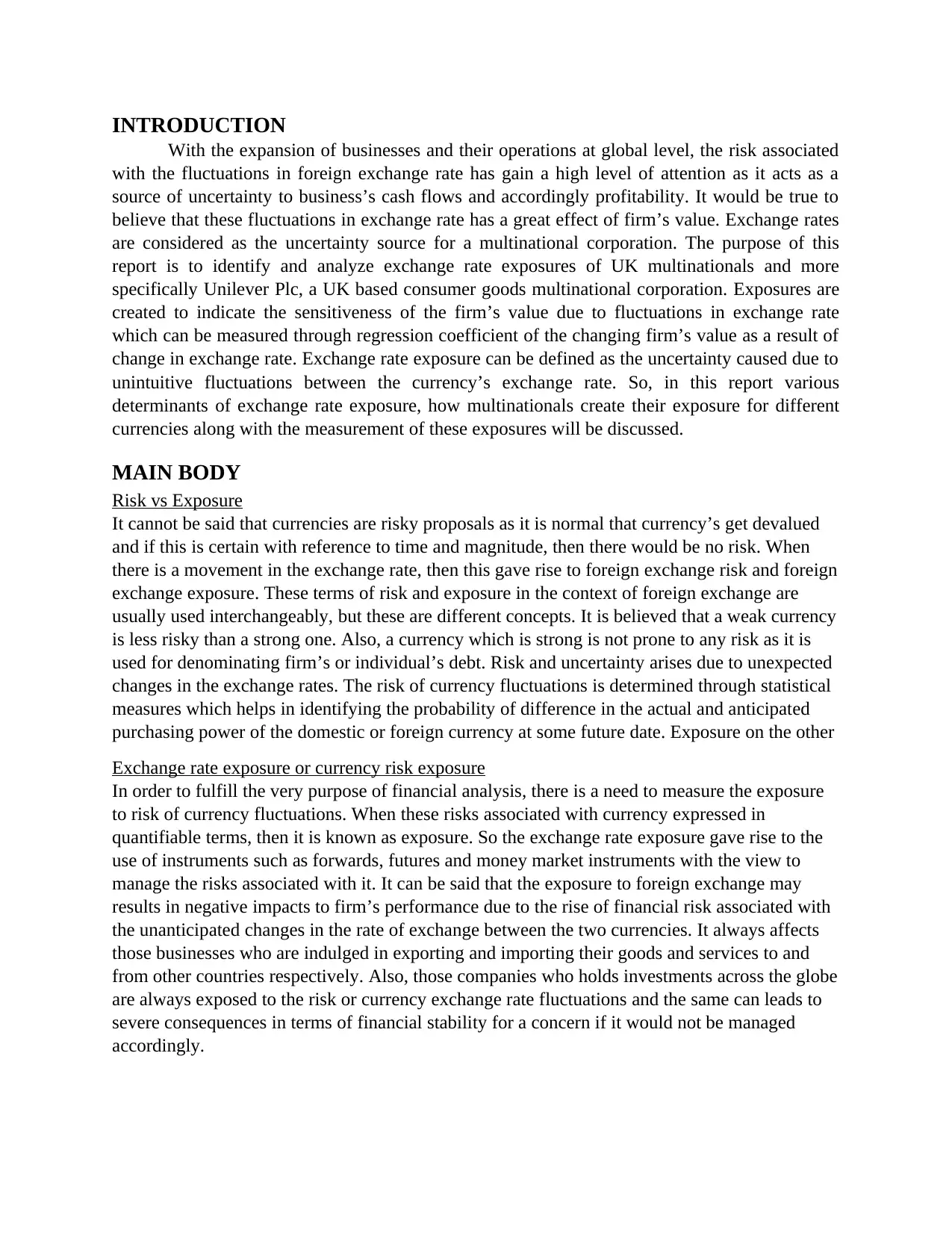Econometrics Project: Assessing Exchange Rate Exposure of Listed Firms
VerifiedAdded on 2022/12/26
|2
|588
|33
Project
AI Summary
This econometrics project examines the exchange rate exposure of UK multinationals, with a specific focus on Unilever Plc. The report introduces the topic by highlighting the impact of foreign exchange rate fluctuations on businesses, particularly their cash flows and profitability. It defines exchange rate exposure and discusses the associated risks, distinguishing between risk and exposure in the context of currency fluctuations. The project explores various determinants of exchange rate exposure and how multinationals manage these exposures. The main body of the project investigates the measurement of exposure to currency fluctuations, emphasizing the use of financial instruments to manage related risks. The project addresses the impact of exchange rate fluctuations on businesses involved in international trade and those with global investments. The project aims to identify, analyze, and measure the exchange rate exposures of UK multinationals, providing insights into the sensitivity of firm value due to changes in exchange rates, and using regression analysis to quantify this relationship. The project adheres to the guidelines of an econometrics project, including a clear research question, data analysis, and interpretation of results. The project includes references to relevant literature and aims to be accessible to a non-expert audience with a grounding in econometrics.
1 out of 2

